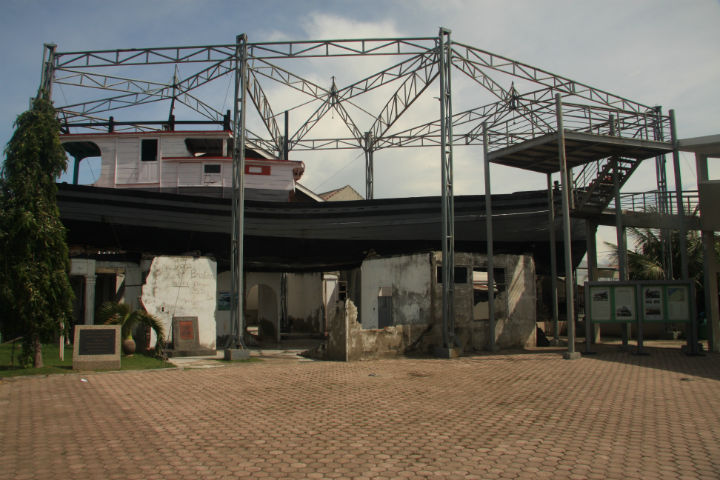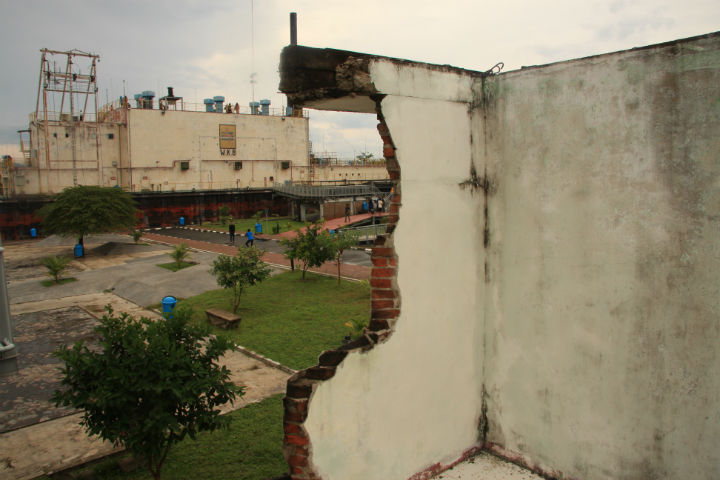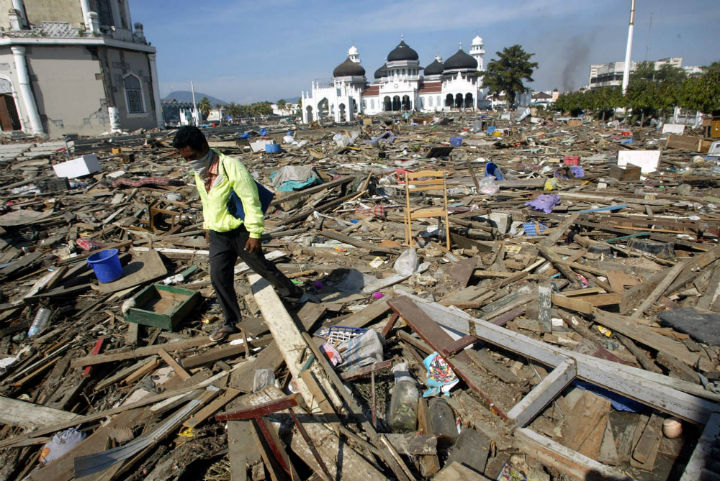There’s sadly nothing unique about Salmi Hardiyanti’s story in her home of Banda Aceh, Indonesia. Ten years ago she lost her mother, two younger sisters, her grandparents and several others in her extended family when the waves of the Indian Ocean tsunami pummeled the shores of Indonesia’s Aceh province.

The magnitude-9.1 earthquake — the strongest quake to hit anywhere in the world in 40 years and the third strongest on record — struck at 7:58 a.m. local time on Dec. 26, 2004.
A series of tsunami waves, racing in all directions from where the earth ruptured, at speeds of more than 800 km/h and reaching heights up to 30 metres in some places, began hitting the coast of Banda Aceh (Aceh’s capital) within minutes and obliterated most everything in their path.
Hardiyanti was just 14 years old the day the waves hit. Fortunately she lived away from home at a school dormitory. She had just visited her family the day before the sea swept in and claimed their lives. Her family members were among the more than 227,000 people, in 14 countries, who died that day. Aceh suffered the worst, with an estimated 167,000 people dead or missing in the destruction.
READ MORE: Indian Ocean tsunami: Remembering the day the wave came
She only learned the grim news about her lost family members five days later. All that was left of her home was the bathtub.
One site in Lambaro, en route to Banda Aceh’s international airport, is the final resting spot for some 47,000 people. Tens of thousands more were interred at others sites, in the areas of Ulee Lheue, Lhok Nga and Darussalam.
Hardiayanti spoke with Global News reporter Mike Armstrong, who reported from Banda Aceh in the weeks that followed the tsunami, when he returned to the city ahead of the 10-year anniversary of the catastrophe.
Watch The Day the Wave Came on Global’s 16×9 Saturday at 7 p.m.
She recounted her family’s tragic story while standing in front of a large fishing boat that still rests on the roof of what used to be a home.
Hardiyanti is now a guide at that location. She’s a part of what has been labelled “memory tourism.”
It’s a way of paying tribute to the city’s devastating past while contributing to its prosperous recovery. “It’s opened the jobs for all the citizens in this area,” she told Global News.
The landmark, and others like it, have been preserved to ensure the lives that were lost aren’t forgotten and so the stories of those who survived continue to be shared. The fishing boat is a testament to that.
The wooden vessel was washed inland on a wave believed to be about 15 metres high, pushed about one kilometre from where it was docked. Be it luck or fate, 59 lives were saved because of that boat slamming into that building and coming to a halt.
Those survivors escaped the rising waters by climbing to the roof of the concrete building, today just a shell of what it was, and onto the boat.
- Posters promoting ‘Steal From Loblaws Day’ are circulating. How did we get here?
- Video shows Ontario police sharing Trudeau’s location with protester, investigation launched
- Canadian food banks are on the brink: ‘This is not a sustainable situation’
- Solar eclipse eye damage: More than 160 cases reported in Ontario, Quebec
READ MORE: 10 years after tsunami, UN envoy says more focus needed on reducing risks
Gaya Triana and her family were among the survivors who managed to climb aboard.
Like Hardiyanti, Triana now works at one of the memorial sites. Open since 2009, the Aceh Tsunami Museum houses a collection of relics recovered after that awful day. It’s also an education centre and, in case disaster strikes twice, a safe haven.
Just entering the museum, you’re taken back to the darkness of that day. Water trickles down the walls of a narrow, almost pitch black corridor that winds inside the museum. It’s meant to give you a sense of the fear felt that day, as you walk into the bright, open atrium at the heart of the museum.
A couple kilometres away from the museum sits an almost unimaginable sight — a 2,600-ton barge that housed a power generator swept up by the tsunami and dropped five kilometres away in the middle of a neighbourhood. It, too, has been equipped to cater to memory tourists.
Tourism is an industry that was not previously associated with Aceh.
She said it doesn’t feel like 10 years have gone by since so much of the region was devastated — her family’s home was also severely damaged and took several years to rebuild — but she marvels at how remarkable the recovery has been.
READ MORE: 10 years after tsunami, victim’s mom learns body wasn’t lost
“I think the construction work has been amazing and of course we thank to the world for helping us going through all these difficult times,” said Meutia, who worked for the United Nations following the tsunami, registering hundreds of national and international disaster response and aid organizations.
The opening up of Aceh province came after the Indonesian government reached a peace agreement with the Free Aceh Movement in the years that followed the tsunami, ending a conflict that lasted more than 30 years.
With the accord signed in 2005, Aceh province opened up to the outside world and has slowly lured a tourism industry that the rest of Indonesia had enjoyed for years.
The province has been governed by Shariah, or Islamic law, since 2001. There are laws concerning modest dress for both women and men, no consumption of alcohol, no gambling and limits on interactions between unmarried men and women. The laws have become stricter in the past year and non-Muslims are now expected to abide by them as well.
Meutia said there’s not a lot of difference between how Shariah is enforced in other tourist hotspots, such as Malaysia. But there have been concerns penalties for violations — including floggings in some cases — could deter tourists and possibly foreign investment in lucrative resource extraction operations.
While it’s not as indulgent a place as the tourist haven of Bali, and the local residents don’t want it to be, guesthouses are popping up in nearby beach communities and tourists from home and abroad are increasingly visiting Banda Aceh to see a city that rose again from the rubble.
With reporting from Mike Armstrong in Banda Aceh




























Comments